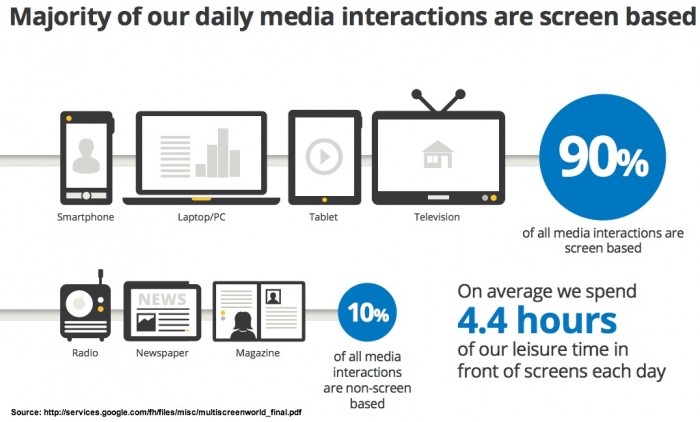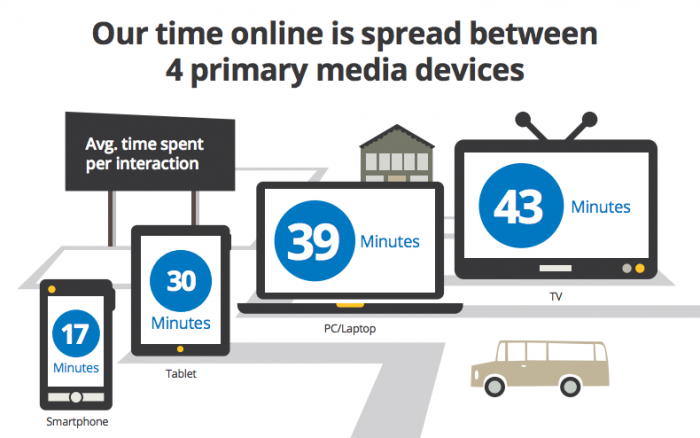Whether it’s a laptop, TV, smartphone, tablet or some other device, we are consuming, creating, and curating content across multiple devices in our day-to-day lives.

Here’s a partial list of my own multi-screen experiences during the past week:
–Downloaded the new video-based curriculum, The Christmas Experience, to my laptop.
–Watched a sermon missed on TV, previously recorded on DVR.
–Chatted live with a spiritual coach at Groundwire.net through live chat embedded directly into a new streaming video platform, while watching a video at the same time.
–Shared live-tweets via phone with friends at Oak Hills Church to support their own Ally Brooke while she was performing with Fifth Harmony on the X Factor finale.
–Tested a new content management and publishing tool for creating and curating dynamic playlists for multi-screen content distribution.
We now live in a multi-screen world.
 A Google report points out that 90% of our media consumption occurs in front of a screen. On average, we spend a whopping 4.4 hours of our leisure time in front of screens each day.
A Google report points out that 90% of our media consumption occurs in front of a screen. On average, we spend a whopping 4.4 hours of our leisure time in front of screens each day.
By contrast, only 10% of all media interactions are non-screen based. Traditional radio, newspapers, and magazines are taking the biggest hit from this attention shift.

The report indicates that the four screens are all thriving at the same time, and the time spent per device in each sitting or interaction is approaching parity.
TV – 43 minutes
PC/Laptop – 39
Tablet – 30
Smartphone – 17
You can see a slide share of the full report from Google here.
Seven steps to relevance
The days of churches and broadcasters reaching a single target audience using traditional media are gone. Any Christian organization interested in reaching the “always on” audience has to think about multiple screens and multiple audiences interconnected by shared interests and experiences.
Every aspect of media ministry and outreach is going to undergo a complete transformation over the next decade. The new normal will be engaging multi-screening audiences with the gospel in ways that are contextually relevant to each screen.
Is your ministry or business ready?
- Step one, get connected. Experience the value of using multiple screens simultaneously.
- Step two, get fluent with the core technologies that enables content to be viewed optimally on multiple screens.
- Step three, find the people you want to reach with the gospel, a.k.a engage them.
- Step four, partner with the best storytellers, content producers and brand navigators.
- Step five, keep your audience engaged.
- Step six, design experiences for particular devices based on contextual triggers such as location, timing and spiritual openness. Cater your marketing strategies to fit those use cases and behaviors.
- Step seven, offer advertisers and sponsors opportunities to engage your audiences in contextually relevant ways.
Step four is the centerpiece of your strategy. Story, and conversations those stories inspire, is what will keep people from looking away from their screen of choice.
The technology to connect and synchronize multiple screens is here. Deployment is not optional for those that want to be the most responsive, resilient and relevant in reaching the next generation going forward.